Do you have a question about the BIRD 43 and is the answer not in the manual?
Explains formal warnings and their meaning.
Details general safety statements and their implications.
Outlines the operation section of the manual.
Outlines the maintenance section of the manual.
Describes the purpose and main functions of the wattmeter.
Details the physical and operational features of the wattmeter.
Explains operation using the travelling wave concept.
Details how to calculate power dissipated in a load.
Compares standing wave and travelling wave concepts for measurements.
Discusses using the wattmeter with non-50 ohm lines.
Instructions for connecting the wattmeter to transmission lines.
Procedures for detaching and remotely installing the RF line section.
Guidance on cutting panels and mounting the RF line section.
Step-by-step guide for standard operation of the wattmeter.
Procedures for tuning loads and matching impedances using the wattmeter.
Guide to diagnosing and resolving common operational issues.
Procedures for cleaning critical surfaces of the wattmeter.
Procedure for setting the meter's zero point when no power is applied.
Contact information for returning units and general support.
Details the specific features and operation of the Bird 43P model.
Highlights the physical differences and capabilities of the Bird 4305A.
Describes the RF sampling probe and attenuation levels for the Bird 4431.
Covers panel mounting and RF sampling features of the 4520 series.
Specifies the nominal impedance of the transmission lines for use.
Lists the maximum acceptable Voltage Standing Wave Ratio for the models.
Details the types of connectors used for primary line and RF sampling.
Outlines the power and frequency capabilities based on the element used.
Explains formal warnings and their meaning.
Details general safety statements and their implications.
Outlines the operation section of the manual.
Outlines the maintenance section of the manual.
Describes the purpose and main functions of the wattmeter.
Details the physical and operational features of the wattmeter.
Explains operation using the travelling wave concept.
Details how to calculate power dissipated in a load.
Compares standing wave and travelling wave concepts for measurements.
Discusses using the wattmeter with non-50 ohm lines.
Instructions for connecting the wattmeter to transmission lines.
Procedures for detaching and remotely installing the RF line section.
Guidance on cutting panels and mounting the RF line section.
Step-by-step guide for standard operation of the wattmeter.
Procedures for tuning loads and matching impedances using the wattmeter.
Guide to diagnosing and resolving common operational issues.
Procedures for cleaning critical surfaces of the wattmeter.
Procedure for setting the meter's zero point when no power is applied.
Contact information for returning units and general support.
Details the specific features and operation of the Bird 43P model.
Highlights the physical differences and capabilities of the Bird 4305A.
Describes the RF sampling probe and attenuation levels for the Bird 4431.
Covers panel mounting and RF sampling features of the 4520 series.
Specifies the nominal impedance of the transmission lines for use.
Lists the maximum acceptable Voltage Standing Wave Ratio for the models.
Details the types of connectors used for primary line and RF sampling.
Outlines the power and frequency capabilities based on the element used.
| Accuracy | ±5% of full scale |
|---|---|
| Power Range | 0.1 to 10000 W (element dependent) |
| Insertion VSWR | 1.05 max. (with N connectors) |
| Impedance | 50 Ω |
| Connectors | N-type female |
| Frequency Range | 0.45 to 2.7 GHz (element dependent) |
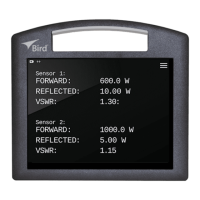
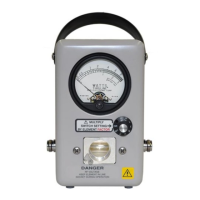

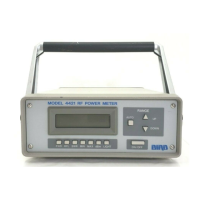
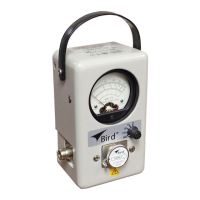
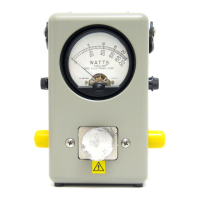
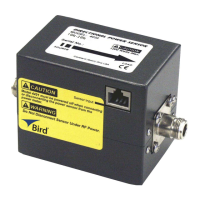
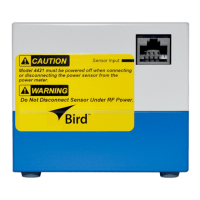
